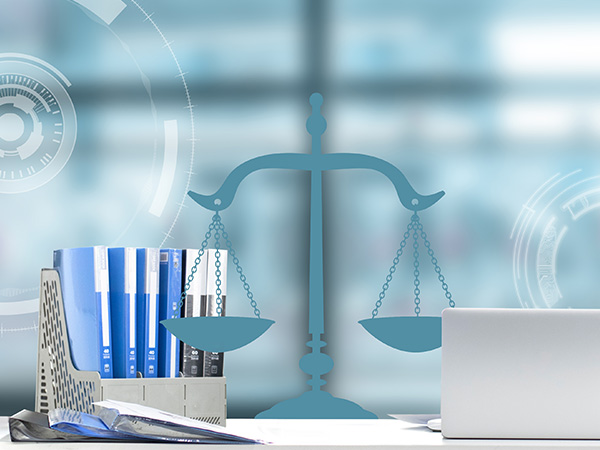Intellectual Property Problem and Innovation of Blockchain Technology
Sun Yuanzhao, visiting professor of Peking University Law School / Intellectual Property Academy, CEO of Asia Pacifi c Legal Institute, columnist
It seems that there will be a new name or slogan every one or two years, forming a heated debate trend in the society, and then various seminars, training and research projects are involved. Then the tide subsides rapidly, as if all stops. From "knowledge economy" to "big data", from "Internet+" to "artificial intelligence", the fashionable topic these days has become "blockchain" technology. All sectors of society have moved again in order to catch up with this trend and strive for various resources, Some people from academia, research institutions and enterprises have also established the so-called "China's First Village- Level Blockchain Innovation Alliance" and1 there are even charged training that claim to train 80 blockchain instructors within three days. There is certainly no lack of serious and rigorous research and exploration behind these discussions, training and meetings,2 but it is still unclear that what kind of substantial assistance the results can bring to the economic development, research and development innovation, and the employment of the whole society.
As long as they are technology related issues and topics, the Bandwagon effect is usually caused in the field of intellectual property. This wave of "blockchain fever" is of no exception. For example, now there have been reports and analysis that attempt to show that the number of patent applications for blockchain in China accounted for nearly half of the world, which intends to show that China's relevant innovations are at least not lagging behind.3 But there are major concerns behind such a prosperous appearance.
The concept "blockchain" comes from a paper on “Bitcoin” published by Satoshi Nakamoto, in which he used the blockchain as the main backend technical support of electronic direct payment.4 "Blockchain" is described or defined as "a purely peer-to-peer version of electronic cash would allow online payments to be sent directly from one party to another without going through a financial institution."
It can be seen from this statement that the original meaning of blockchain is to achieve the goal of "decentralized" in the way of "mutual participation of the whole network (people)", as if all records of relevant transactions (or payments) are stored permanently in the full view to form one overlapped transaction records block after another, thus a third party (such as bank and other financial institutions) as the credit intermediary is no longer needed and the transaction efficiency can be also increased and transaction cost can be reduced significantly.
For this purpose, the operational software of the whole blockchain is written entirely in open source codes and can be modified and perfected by other participants. For this reason, the blockchain technology, which originates from cryptography, has been rapidly popularized and applied to many different technical fields, and is no longer limited to "Bitcoin" or financial transaction markets.
At the level of intellectual property rights, apart from unoriginal purely functional operations or operation methods, open source codes can, in principle, be protected by copyright. Unlike traditional copyright, which is all rights reserved, the open source codes are some rights reserved, but not completely free, unconditional and voluntary permission. Even so, the experience told us that any technology developed through open source codes has a common problem: once it encounters patent right, it can become incompatible with the original development purpose, causing a serious conflict, or even failing completely.
To deal with this problem, software developers often require participants not to apply for (or voluntarily waive) their patent right at the very start in the source code license aggrement to ensure the integrity and smoothness of the entire licensing chain. But this approach isn't effective in curbing the problem. One of the most high profile and highly controversial lawsuits recently was a dispute between Oracle and Google over whether the "Android" operating system of the latter infringes on the "Java" programming language of the former, particularly its application programming interface (API).
Oracle accused Google of violating its license agreement by engaging in unauthorized plagiarism, adaptation and use, taking some key parts in their programming language as the basis to develop "Android" operating system, which is incompatible with the former. On the second appeal of the case, the United States Court of Appeals for the Federal Circuit ruled that Google's reuse of the APIs had not been fair use, now the pending question is determining the damages which perhaps could be estimated at USD 8.8 billion. Even for such a company like Google, such high litigation and compensation costs are also a heavy burden for them, not to mention countless small and micro businesses engaged in software (open source code) design. The huge potential risks will deter them, creating a "chilling effect".
But on the other hand, there is considerable difficulty in applying patents of blockchain technology. Due to its nature as "business methods", how to avoid being considered as a patent for the specific logical calculus or algorithm itself by the patent examiner will be a great test for the applicant. In addition, the blockchain technology written in open source code has been in use for many years and has begun to be widely used in different fields. It isn't easy for the applicant to find out how their new technological invention of blockchain can meet the requirements of novelty and inventiveness.
Currently there are many financial institutions around the world who have filed patent applications related to blockchain technology. On the surface, their strategy is to carry on the defensive layout, but the attack is the best defense, these above-mentioned patent rights on blockchain may be easily changed into offensive weapons because of business purposes such as obligees protecting existing market and striving for new market shares, thus interrupting the "chain" in the entire blockchain system. From the perspective of public benefit and public policy, this not only completely deviates from the original intention of developing the blockchain technology, but also forms a new information barrier ( "chain" does not exist, only "block" is left ), which leads to barriers to innovation and sharing. For example, in the field of medical insurance, the hope was that in the future, the personal medical information of each patient could be saved more safely and shared in a timely manner through blockchain technology, so that all kinds of medical institutions could immediately launch effective emergency programs if anything happens. However, if the medical systems apply to different and incompatible blockchain systems to keep and handle the medical records of its patients, the barriers to connection and sharing will be inevitably increased.
This shows that at least in the current environment, the most suitable protection mechanism matching blockchain and related technological innovations is "some rights reserved" and license agreement related to development of open source codes. If patent right and other intellectual property rights are applied, any carelessness will seriously damage the whole blockchain system. This does not, of course, mean that patents should not be granted for anything involving blockchain technology - If relevant inventors have filed an application and their application meets all the relevant legal requirements, there is no reason for the patent examiner to refuse the authorization. However, if the whole society indiscriminately competes for any "intellectual property protection" related to this fashionable name in a confused manner, and does not go into details about its specific connotation, the welfare that blockchain technology should bring to human beings will be ironically far away from us.










